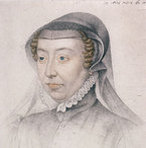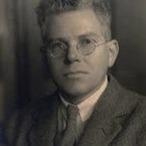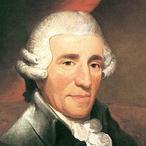|
The May edition of Physics World will lead with a fascinating story about the transit of the planet Venus across the disk of the Sun, which is to occur on the 5th or 6th (depending on your time zone) of June this year. Transits occur in pairs separated by eight years, with the gap between pairs of transits alternating between 105.5 and 121.5 years. The last transit, the first of the pair to occur in our lifetimes, was in 2004. The earliest recorded transit was in 1639. The following transits were recorded in pairs: 1761 and 1769, and 1874 and 1882. The pair of transits will not occur again until 2117 and 2125. The transit will take approximately six hours, and viewers will see a small black dot passing slowly across the face of the Sun. Venus has been the brightest star in the sky for most of March, and has been in a visible conjunction with Jupiter recently as well. In the picture below, Venus is to the left of the Moon, with Jupiter below it. Normally, when Venus passes between the Earth and the Sun, it does so either above or below the Sun, thus passing unnoticed. However, during these transits, Venus crosses the ecliptic, the plane the apparent path of the Sun across the celestial sphere as seen from the Earth. When this happens, an occultation of the Sun occurs - an occultation being the process where one object is hidden by another object by passing between the first object and the observer, much like the process of a solar eclipse. Eclipses, transits and occultations occur at times of syzygy, when three celestial bodies, such as the Sun, Earth and Venus, are configured in a straight line. In the case of a solar eclipse, the Moon, as seen from the Earth, is the same size as the Sun, and so totally obscures the Sun from the point of view of the Earth. In the case of the Sun's occultation by Venus, only a tiny part of the Sun's disk is obscured as Venus, though bigger than the Moon in reality, looks much smaller when viewed from the Earth. 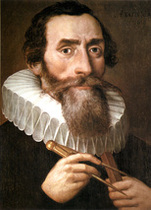 Johannes Kepler Johannes Kepler The first person to predict a transit of Venus was the mathematician, astronomer and astrologer Johannes Kepler. In 1627 he made some predictions relating to transits that would occur in the 17th and 18th Centuries. His first prediction was for the 1631 transit. Unfortunately, as the tables he used to make the prediction contained inaccuracies, he did not realise that the transit would not be visable from mainland Europe. Because of this, the first transit of Venus to be predicted went unobserved. Kepler also predicted that there would be a "near miss," i.e. that Venus would pass close to the Sun without causing an occultation, in 1639.  Jeremiah Horrocks Jeremiah Horrocks In the early to mid 1630’s, astronomer Jeremiah Horrocks believed that Venus, instead of passing the Sun, would indeed make a transit. Horrocks believed there to be inaccuracies in the tables used by Kepler to predict the 1639 “near miss,” and had started to make observations of his own. He entered into correspondence with another English astronomer, William Crabtree, and the two of them became, on 4 December 1639, the first recorded people to observe a transit of Venus. For Horrocks, it was nearly a disaster, as the transit, due to start at 3pm, was obscured by cloud. It cleared at 3:15pm, allowing Horrocks to view it for a further half hour until sunset. Horrocks and Crabtree managed to view the transit by focusing the image of Sun through a telescope and projecting it onto a piece of card. They could then watch the little black dot that was Venus make its way across the card. Horrocks died only a couple of years later in 1641. He was only 22 years old.  Andrea Wulf, Author Andrea Wulf, Author The transit has also sparked, in more recent times, the imagination of the author Andrea Wulf whose book, called Chasing Venus: The Race to Measure the Heavens, is now available. It is an "absorbing account" of the 1761 and 1769 scientific expeditions to record the exact time and duration of the transits, which occurred all over the world. As Wulf says in an interview with The Wall Street Journal, "this heavenly rendezvous spurred the first international scientific collaboration, laying the foundation of modern science." (1) Why did this happen? Well, it was all to do with measuring the distance between the Earth and the Sun. To do this properly, readings had to be taken from both the Southern and Northern Hemispheres, in as many locations as possible. What is so amazing is that this occured during a period of global warfare: the Seven Years War. "[H]undreds of astronomers from the belligerent nations joined together to plan expeditions to see the transit from India, the Arctic Circle, Siberia, Tahiti, Newfoundland, Baja California and many other places..." (2) The planning of such a collaboration was all the more difficult as the means of communication available was much slower than today: "a letter posted in Philadelphia took two to three months to reach London." (3) In the video below, Wulf discusses her book, and gives examples of the personal stories of the astronomers that took part, and also the world leaders, such as Catherine the Great of Russia, who's minds were captured by the idea of "Chasing Venus." 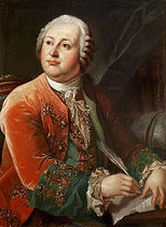 Mikhail Lomonosov Mikhail Lomonosov The 1761 transit also provided Russian polymath, scientist and writer, and founder of the University of Moscow, Mikhail Lomonosov, with the conditions to discover that Venus had an atmosphere. He made observations of the physical properties of the planet during the occultation, which were published in his paper The Appearance of Venus on Sun as It was Observed at the St Petersburg Emperor’s Academy of Sciences on May 26, 1761: "I found a black indentation from the coming Venus, which replaced the former vague spot. I continued to look attentively how the trailing side of the planet approaches the Sun; suddenly, a hair-thin bright radiance (luminescence) between Venus’ trailed side and solar edge appeared that lasted only less than a second. "Before the Venus ingress, when its front side approached the solar edge at about one tenth of the planet’s diameter, a bulge set up which progressively became more pronounced as Venus came to leave the Sun. Soon after that the bulge disappeared and instead, Venus appeared with no edge. Similar to the ingress phase, the last touch of the planet’s trailing side at the emergence was also accompanied by a small break and solar edge obscuration." (4) As a result of these observations, Lomonosov concluded that "the planet Venus is surrounded by a distinguished air atmosphere similar (or even possibly larger) than that [which] is poured over our Earth." (5) 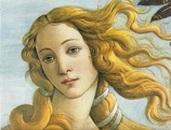 The Birth of Venus, Botticelli The Birth of Venus, Botticelli The planet Venus has always fascinated us from earliest times. In Greek mythology Aphrodite, who later became Venus in Roman mythology, was a deity associated with beauty, pleasure and sexuality. In her common form, Aphrodite Pandemos, she was born of Zeus and Dione, and was the legendary beauty who provoked wars and constantly cuckolded her long-suffering husband, Hephaestus (Roman: Vulcan). However, in Hesiod'sTheogony (circa 700BC), she was born when Cronous (Roman: Saturn) castrated his father, Ouranos (Roman: Uranus), and threw his severed genitals into the sea. From the foam these created, arose Aphrodite Ourania, the Heavenly Aphrodite, fully formed. In this version of the myth, she predates Zeus, and was contemporanious with the Titans. Hers was a more exalted cult, representing the love of body, mind and soul. This idea of Venus as both a force of attraction, and as one of mind and soul, can be seen in the differing stances taken by exoteric and esoteric astrology. In exoteric astrology, Venus is the planet of love and relationships: "Venus is significator...of all expressions of love, and especially so when it comes to the romantic variety." (6) Here is Aphrodite Pandemos. While in esoteric astrology, the planet is linked to the principle of mind: “[t]hrough Venus [one] comes under the power of the mind, transmuted into wisdom through the instrumentality of love.” (7) Here we have Aphrodite Ourania. 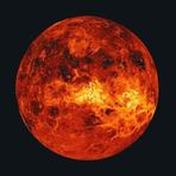 Venus Venus It is perhaps appropriate that this planet, one to which we have ascribed the attributes of mind, relationships, and something deeper, should be the inspiration for science's first global collaboration. Andrea Wulf put's it so eloquently when she says that "[t]he most important result of this effort...was the successful collaboration of an international community of scientists—a precedent that has served humankind well. As we look skyward this June...we might pause for a moment to remember the hundreds of men who watched the exact same spectacle some 250 years ago." (8) For further information about the transit, see the TransitofVenus.org website. WARNING: Please remember, if you are interested in the transit: "Never look at the sun directly, even when something exciting is happening, such as an eclipse. Doing so can cause irreversible damage to your eyesight and even lead to blindness. Several studies also suggest that sunlight exposure is a risk factor for cataracts." (9) © James Edward Hughes 2012 (1) The Wall Street Journal. A Celestial Event That Sparked A Revolution. Saturday/Sunday, April 21-22, 2012
(2) ibid. (3) ibid (4) Mikhail Ya. Marov (2004). "Mikhail Lomonosov and the discovery of the atmosphere of Venus during the 1761 transit".Proceedings of the International Astronomical Union (Cambridge University Press): 209–219 (5) ibid. (6) The Contemporary Astrologer’s Handbook: An In-Depth Guide to Interpreting Your Horoscope. Sue Tompkins. Flare Publications. 2006. pp125 (7) Esoteric Astrology. Alice Bailey. Lucis Publishing Company. 1936. pp127 (8) The Wall Street Journal. A Celestial Event That Sparked A Revolution. Saturday/Sunday, April 21-22, 2012 (9) NHS UK website. Look after your eyes. Last reviewed: 11/08/2010
0 Comments
Your comment will be posted after it is approved.
Leave a Reply. |
Categories
All
Archives
November 2013
|
MOST VIEWED POSTS
© James Edward Hughes 2013
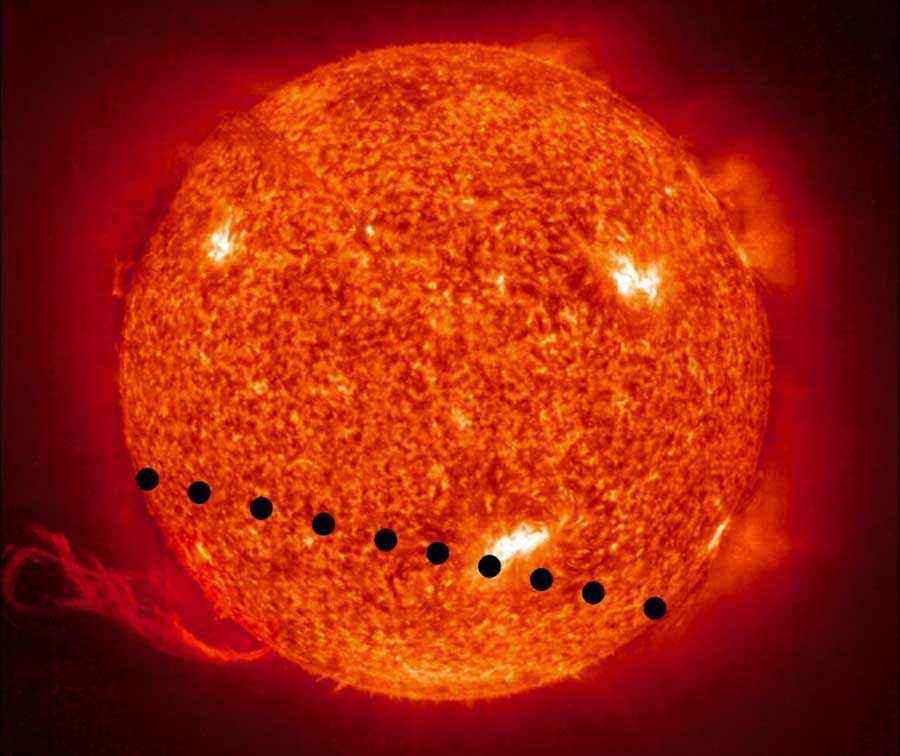
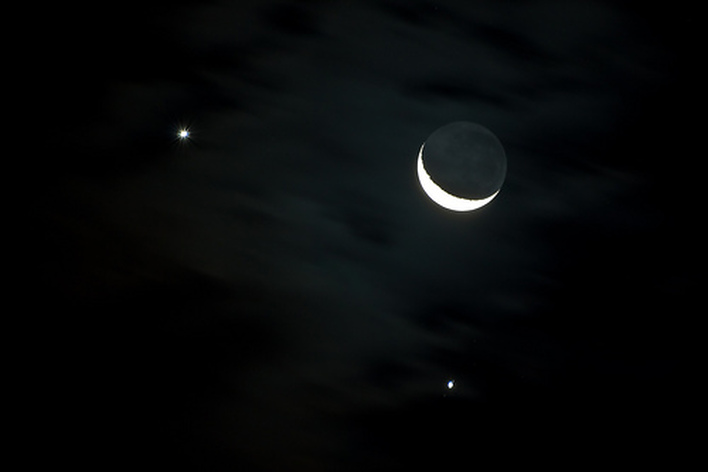
 RSS Feed
RSS Feed
